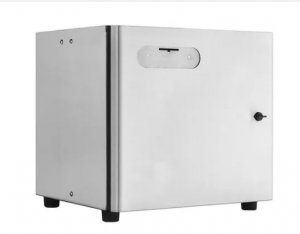Contact person: Mr. Xiaoyu Fei
Position:
Address: No. 288 Yitang Road, Suzhou, Jiangsu
Country: China
Phone: - Mobi: 0512-63636308
Telecommunication Communication Cabinet Assembly
Price:
Telecommunication Communication Cabinet Assembly
Telecommunication communication cabinets, often referred to as telecom cabinets, are the backbone of modern communication networks. These enclosures house vital telecommunication equipment, ensuring seamless connectivity and reliable communication services. The assembly of these cabinets demands precision, expertise, and adherence to stringent industry standards.
The Assembly Process
The assembly of a telecommunication communication cabinet typically involves the following stages:
Cabinet Preparation
Enclosure selection: Choosing the appropriate cabinet size, material, and environmental protection based on the equipment and deployment location.
Internal structure: Installing mounting rails, shelves, and cable management systems to optimize equipment placement and airflow.
Equipment Installation
Component mounting: Securely installing telecommunication devices such as switches, routers, modems, and power supplies within the cabinet.
Cable termination: Connecting cables and wires to the equipment, ensuring proper termination and labeling.
Power distribution: Installing power distribution units and connecting power cables to the equipment.
Testing and Commissioning
Functional testing: Verifying the correct operation of all installed equipment.
Network configuration: Configuring network settings and parameters.
Performance evaluation: Assessing the overall performance of the cabinet and its equipment.
Challenges and Best Practices
Assembling telecommunication communication cabinets presents unique challenges:
Space constraints: Efficiently utilizing limited cabinet space while ensuring optimal airflow and accessibility.
Thermal management: Managing heat dissipation within the cabinet to prevent equipment failures.
Electromagnetic interference (EMI): Shielding equipment from EMI to maintain signal integrity.
To address these challenges, best practices include:
Modular design: Using modular components for flexibility and scalability.
Thermal management solutions: Implementing cooling systems or ventilation to regulate temperature.
EMI shielding: Employing shielding materials and techniques to minimize interference.
Quality control: Adhering to strict quality control measures throughout the assembly process.
The company ACE has cooperated with customers from different manufacturing industries for many years, and has accumulated rich and valuable manufacturing and design experiences. We can provide end to end services from parts production to integrated assembly and desgin services to our customers.
Telecommunication communication cabinets, often referred to as telecom cabinets, are the backbone of modern communication networks. These enclosures house vital telecommunication equipment, ensuring seamless connectivity and reliable communication services. The assembly of these cabinets demands precision, expertise, and adherence to stringent industry standards.
The Assembly Process
The assembly of a telecommunication communication cabinet typically involves the following stages:
Cabinet Preparation
Enclosure selection: Choosing the appropriate cabinet size, material, and environmental protection based on the equipment and deployment location.
Internal structure: Installing mounting rails, shelves, and cable management systems to optimize equipment placement and airflow.
Equipment Installation
Component mounting: Securely installing telecommunication devices such as switches, routers, modems, and power supplies within the cabinet.
Cable termination: Connecting cables and wires to the equipment, ensuring proper termination and labeling.
Power distribution: Installing power distribution units and connecting power cables to the equipment.
Testing and Commissioning
Functional testing: Verifying the correct operation of all installed equipment.
Network configuration: Configuring network settings and parameters.
Performance evaluation: Assessing the overall performance of the cabinet and its equipment.
Challenges and Best Practices
Assembling telecommunication communication cabinets presents unique challenges:
Space constraints: Efficiently utilizing limited cabinet space while ensuring optimal airflow and accessibility.
Thermal management: Managing heat dissipation within the cabinet to prevent equipment failures.
Electromagnetic interference (EMI): Shielding equipment from EMI to maintain signal integrity.
To address these challenges, best practices include:
Modular design: Using modular components for flexibility and scalability.
Thermal management solutions: Implementing cooling systems or ventilation to regulate temperature.
EMI shielding: Employing shielding materials and techniques to minimize interference.
Quality control: Adhering to strict quality control measures throughout the assembly process.
The company ACE has cooperated with customers from different manufacturing industries for many years, and has accumulated rich and valuable manufacturing and design experiences. We can provide end to end services from parts production to integrated assembly and desgin services to our customers.
SEND INQUIRY
Please fill in fully your information to send email
CATEGORY














 Agriculture
Agriculture